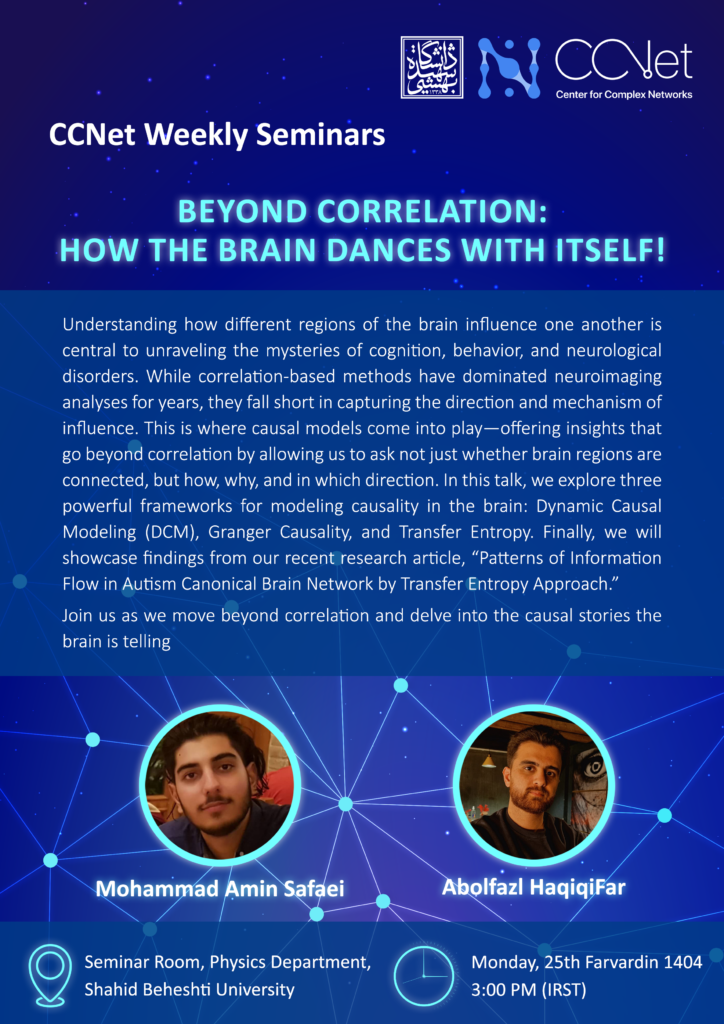Understanding how different regions of the brain influence one another is key to unlocking the secrets of human behavior, thought, and neurological health. Brain connectivity research helps explain how the brain functions as a whole, and how communication between regions supports cognition. It also helps uncover what changes in this communication during conditions like autism.
For years, brain researchers have used correlation-based methods to study functional connections. These techniques show whether brain regions are active at the same time. However, they fall short when it comes to understanding why these connections exist, how they work, or in which direction the information flows.


Causal models fill this gap. Instead of just asking if two areas are connected, they ask deeper questions. Which brain region is driving another? What is the direction of information flow? How do patterns change over time? These models offer more powerful insights into brain connectivity.
In this talk, we explore three well-known approaches to studying causality in the brain: Dynamic Causal Modeling (DCM), Granger Causality, and Transfer Entropy. Each method provides a different lens to examine brain function. One focuses on temporal patterns. Another explores predictability. The third investigates how information moves across networks.

We will also highlight findings from our recent research titled “Patterns of Information Flow in Autism Canonical Brain Network by Transfer Entropy Approach.” In this study, we analyzed fMRI BOLD data to uncover how information flow patterns differ in individuals with autism. Our results point to meaningful differences in brain connectivity that could lead to better understanding and support.
Join us as we move beyond surface-level connections and dive into the rich, directional stories told by the brain’s networks. Discover how causal models reveal the dynamic language of the mind—and open new doors in neuroscience research.





